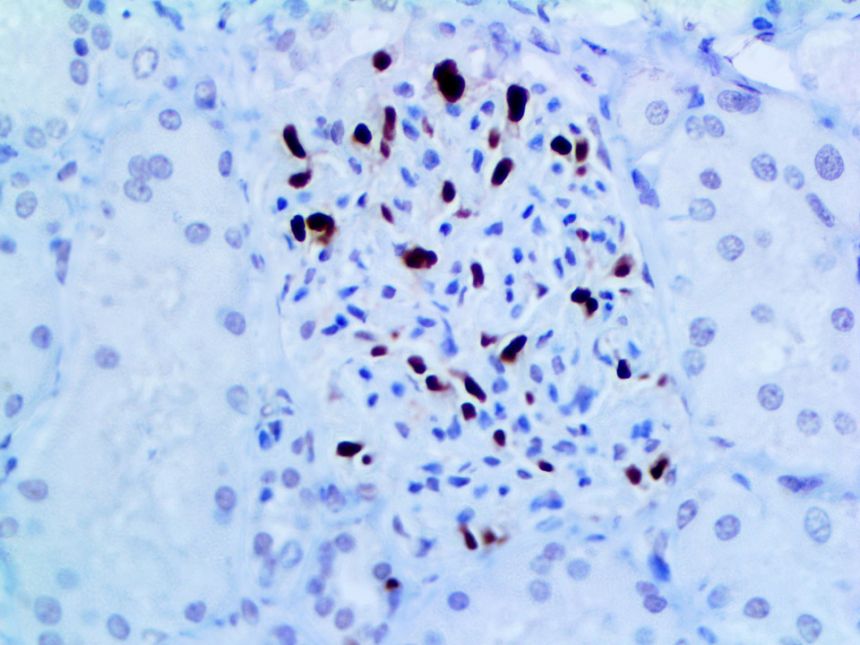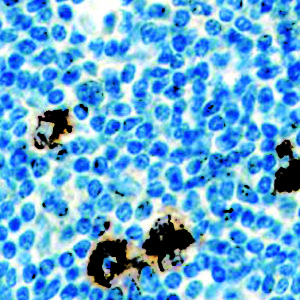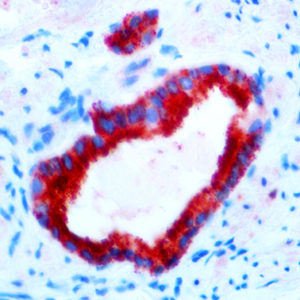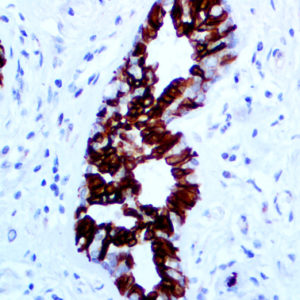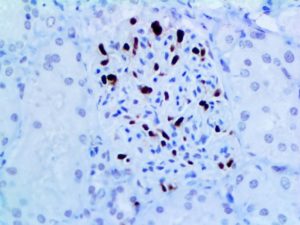
IHC of p57 on an FFPE Placenta Tissue
| Intended Use | For In Vitro Diagnostic Use | |||||||||||||||||||||||||||||||||||
| Summary and Explanation | p57 or p57KIP2 is a tumor-suppressor human gene that belongs to the cip/kip gene family. It encodes a cell cycle inhibitor that binds to G1 cyclin-CDK complexes. Thus, p57 causes arrest of the cell-cycle in G1 phase. A mutation of this gene may lead to loss of control over the cell-cycle leading to uncontrolled cellular proliferation. The gene encoding human p57KIP2 is located on chromosome 11p15.5, a region implicated in sporadic cancers, Wilm’s Tumor and Beckwith Wiedemann Syndrome (BWS is characterized by increased risk of tumor formation in childhood), making it a tumor suppressor candidate. Anti-p57 has been used to aide in discriminating Complete Hydatidiform Mole (CHM) (no nuclear labeling of cytotrophoblasts) from Partial Hydatidiform Mole (PHM) and hydropic abortion. In normal placenta, many cytotrophoblast nuclei and stromal cells are labelled with this antibody. Similar findings apply to PHM and hydropic abortus tissues. Intervillous Trophoblastic Islands (IVTIs) demonstrate nuclear labeling in all three entities and serve as an internal control. | |||||||||||||||||||||||||||||||||||
| Antibody Type | Mouse Monoclonal | Clone | Kp10 | |||||||||||||||||||||||||||||||||
| Isotype | IgG2b/K | Reactivity | Paraffin, Frozen | |||||||||||||||||||||||||||||||||
| Localization | Nuclear | Control | Placenta, Colon Carcinoma | |||||||||||||||||||||||||||||||||
| Presentation | p57 is a mouse monoclonal antibody derived from cell culture supernatant that is concentrated, dialyzed, filter sterilized and diluted in buffer pH 7.5, containing BSA and sodium azide as a preservative. | |||||||||||||||||||||||||||||||||||
| Availability |
| |||||||||||||||||||||||||||||||||||
| Note: For concentrated antibodies, please centrifuge prior to use to ensure recovery of all product. | ||||||||||||||||||||||||||||||||||||
